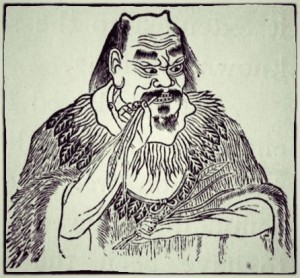Herbs that Release the Exterior
Exterior-releasing herbs are those that release disorders lodged in the very superficial levels of the body. Symptoms associated with the exterior are chills, fever, headache, stiff neck, and general muscle aches. Sometimes sweating will appear, which resolves the condition, in which case no treatment is necessary. An absence of sweating, or sweating not accompanied by any change in condition, indicates herbs that release the exterior.
Sweating:
Sweating refers to the method of exterior resolution. It involves the use of medicinals that promote effusion and outthrust with acrid dissipation (to effuse the exterior and outthrust pathogens with agents that are acrid in flavor and dissipating in action). These medicinals open and discharge the interstices (sweat glands and ducts) to expel the evil from the body. This technique is used to eliminate the evil before it interiorizes.
Sweating is mainly used in exterior patterns such as the onset of externally-contracted febrile diseases and wind-damp or rheumatism, water swelling, and in measles when eruption is imminent. Warm, acrid exterior resolution treats cold patterns, while cool, acrid exterior resolution treats heat patterns.
Warm, acrid exterior-resolving formulas dissipate cold and have a relatively strong sweat-effusing effect, while cool, acrid exterior-resolving formulas clear heat but have a relatively weaker sweat-effusing effect.
Rheumatism: 1. Obsolete term for rheumatic fever. 2. Indefinite term applied to various conditions with pain or other symptoms of articular origin or related to other elements of the musculoskeletal system.
Measles: 1. An acute examthematous disease, caused by m. virus, a member of the family Paramyxoviridae, and marked by fever and other constitutional disturbances, a catarrhal inflammation of the respiratory mucous membranes, and a generalized dusky red maculopapular eruption; the eruption occurs early on the buccal mucous membrane in the form of Koplik spots, a manifestation useful in early diagnosis; average incubation period is from 10-12 days.
Warm, Acrid Herbs that Release the Exterior
Warm, acrid herbs dispel wind-cold and are used for exterior disorders when fever is mild, the chills are severe, and there are other signs and symptoms of wind-cold including headache, body and neck pains, and absence of thirst.
Indications:
Exterior cold patterns with strong aversion to cold, pronounced headache and aching bones, high or low fever, moist, white tongue fur, floating, tight pulse, and absence of any heat signs such as red tongue, dry mouth, or red, sore, swollen tongue.
Functions:
Open the pores and induce perspiration, release exterior pathogens from skin and muscle layer, stimulate immune response, regulate body temperature, stop cough & wheeze, control pain & spasms, and vent rashes.
Common Conditions:
Colds & Flus, complications of internal disorders, bi syndrome, nausea & vomiting, pain (especially of the upper body), sinus congestion, and headache.
Common Qualities:
Herbs in this category tend to be warm and acrid, and are not suitable for long-term use.
- Antipyretic
- Sedative: Gui Zhi
- Diurectic: Ma Huang
- Antibiotic: Gui Zhi, Ma Huang
- Analgesic

